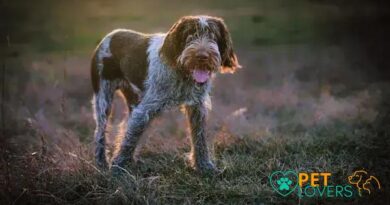O que é agility competitions
What is Agility Competitions?
Agility competitions are exciting dog sports that test a handler’s ability to guide their dog through a timed obstacle course. The primary goal is to navigate the course as quickly and accurately as possible, showcasing the bond and communication between the dog and handler. These competitions are not only a test of speed but also of precision, as dogs must perform various tasks, including jumps, tunnels, and weave poles.
The History of Agility Competitions
Agility competitions originated in the late 1970s in the United Kingdom as a form of entertainment at dog shows. The sport quickly gained popularity and spread to other countries, evolving into a formalized competitive event. The first official agility competition was held in 1978, and since then, various organizations have established rules and regulations to standardize the sport globally.
Types of Agility Competitions
There are several types of agility competitions, each with its own set of rules and formats. The most common types include Standard Agility, Jumpers with Weaves, and Gamblers. Standard Agility courses feature a mix of obstacles, while Jumpers with Weaves focuses primarily on jumps and weave poles. Gamblers competitions introduce a strategic element, allowing handlers to choose which obstacles to complete within a time limit.
Obstacles in Agility Competitions
Agility courses consist of various obstacles that dogs must navigate. Common obstacles include jumps, tunnels, seesaws, and weave poles. Each obstacle presents unique challenges, requiring different skills from both the dog and handler. The design of the course can vary greatly, making each competition a new and exciting experience for participants.
Scoring in Agility Competitions
Scoring in agility competitions is based on a combination of time and faults. The fastest dog to complete the course without incurring faults is declared the winner. Faults can occur for various reasons, such as knocking down a jump bar, missing an obstacle, or exceeding the time limit. Understanding the scoring system is crucial for handlers to strategize their runs effectively.
Training for Agility Competitions
Training for agility competitions involves a combination of obedience training, agility drills, and building a strong handler-dog relationship. Handlers must teach their dogs to navigate obstacles confidently while also learning to communicate effectively. Consistent practice and positive reinforcement are key components of successful training, helping dogs to develop the skills needed for competition.
Equipment Used in Agility Competitions
Agility competitions require specific equipment designed for safety and performance. This includes jumps, tunnels, contact equipment, and weave poles. Handlers often invest in high-quality gear to ensure their dogs can perform at their best. Additionally, many competitions provide their own equipment, allowing for a standardized experience across events.
Benefits of Participating in Agility Competitions
Participating in agility competitions offers numerous benefits for both dogs and handlers. It promotes physical fitness, mental stimulation, and strengthens the bond between dog and owner. Additionally, the competitive aspect can motivate handlers to improve their training techniques and deepen their understanding of canine behavior.
Popular Agility Organizations
Several organizations govern agility competitions, each with its own set of rules and events. Notable organizations include the American Kennel Club (AKC), the United States Dog Agility Association (USDAA), and the Kennel Club in the UK. These organizations host various competitions throughout the year, providing opportunities for dogs and handlers to showcase their skills.
Getting Started in Agility Competitions
To get started in agility competitions, handlers should seek local training classes or clubs that specialize in agility. These classes provide essential skills and knowledge about the sport. Once comfortable, handlers can enter local competitions to gain experience and gradually work their way up to larger events. The journey into agility competitions can be incredibly rewarding and fun for both dogs and their handlers.



